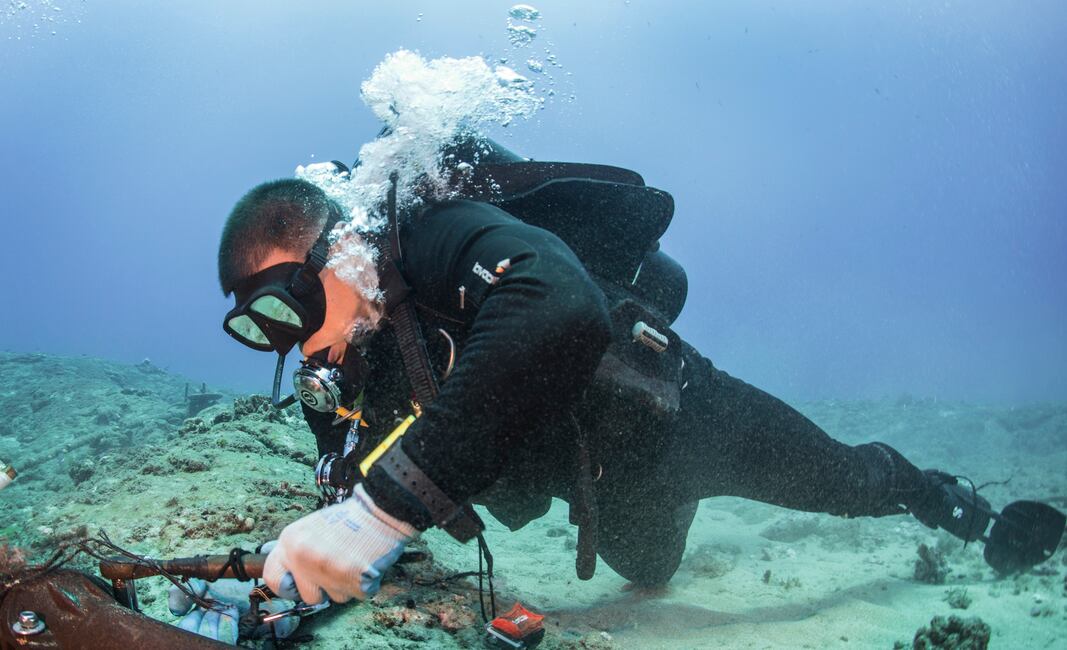As the world continues to grapple with the COVID-19 pandemic, we are reminded that even in a time of unprecedented technological growth and development, simple and primitive threats have the ability to radically alter our way of life. In spite of astonishing medical advancements, some threats, unfortunately, remain timeless.
Many people have drawn comparisons between the current coronvirus pandemic and the Spanish flu pandemic of 1918. The Spanish flu was caused by an H1N1 virus that was first identified in the United States in military personnel in the spring of 1918. It would eventually infect one-third of the global population, killing approximately 675,000 people in the United States and an estimated 50 million people worldwide. All of this was happening in the midst of the “war to end all wars” — World War I.
While the homeland was battling the flu pandemic, the U.S. Navy was battling the U-boat threat in the Atlantic.
In World War I, German submarines sank almost 5,000 ships, most of them merchant vessels. To help counter the U-boat threat, the United States and the United Kingdom embarked on an unprecedented and ambitious project: the construction of the North Sea Mine Barrage — a 230-mile-long underwater barrier of sea mines stretching from Aberdeen, Scotland, to Ekersund, Norway. The effort was a marvel of modern manufacturing, producing 1,000 sea mines every day. Over five months, the allies eventually laid over 70,000 sea mines, helping to contain the U-boat threat and protect allied shipping.
RELATED

As a second wave of the flu pandemic raged across the globe, World War I finally came to an end in November 1918. The American and British navies now had the task of cleaning up 70,000 live sea mines in the unforgiving North Sea. These primitive mines were anchored to the bottom of the sea, and the U.S. and U.K. had the advantage of knowing precisely where they were located because they had laid them. Despite those advantages, it took 82 ships and over 4,000 men — 10 times the assets that were required to lay the mines — to clean up the North Sea Mine Barrage.
After almost a year of mine-clearing efforts, the operation was declared complete. Navy studies would later reveal that only approximately 40 percent of the American mines had actually been cleared, and mines continued to wash ashore for years after the end of the war.
Fast forward a century and sea mines have proliferated around the world. Since the end World War II, sea mines have damaged or sunk four times as many U.S. Navy ships as any other method of attack.
U.S. adversaries have paid attention. Russia was a pioneer in mine warfare and is estimated to have as many as 250,000 sea mines in its inventory. China is not far behind, with an inventory of around 100,000, including some of the world’s most advanced mines. China has hundreds of mine-capable ships and aircraft, and could deploy thousands of mines a day during a conflict.
To counter the mine threat, the U.S. Navy relies on 11 wooden-hulled Avenger-class mine countermeasures ships, 31 MH-53E Sea Dragon helicopters and a handful of explosive ordnance disposal platoons. The Navy wants to retire both the Avengers and Sea Dragons by 2025, while efforts to field any replacement capability have continued to falter.
While the U.S. Navy has focused its research and funding on countering emerging threats such as advanced radars and hypersonic missiles, a time-tested threat waits patiently in the waters around the globe; and if we ignore the lessons of history, a centuries-old technology could lead to our defeat. Mine warfare, like public health, is an area that rarely attracts attention or significant investment until a crisis emerges. We should not wait until American lives are in peril before we take action.
We need to change course immediately. First, the Navy must maintain its existing mine countermeasures forces until a credible replacement is fielded. Second, the Navy must make a significant investment to recapitalize the mine countermeasures force both in time and quantity to deliver a credible force.
Unfortunately, the Navy has spent billions of dollars and wasted precious years pursuing a mine countermeasure module program that, even if it worked as advertised, would have neither the capability nor the capacity to effectively counter an enemy mine threat anticipated in our National Defense Strategy.
Whether it’s a pandemic or a proliferated naval threat, our citizens expect the United States to respond effectively, and we must make the necessary investments to counter the threats to our nation and our Navy.
U.S. Rep. Rob Wittman, R-Va., is the ranking member of the Seapower and Projection Forces Subcommittee.








